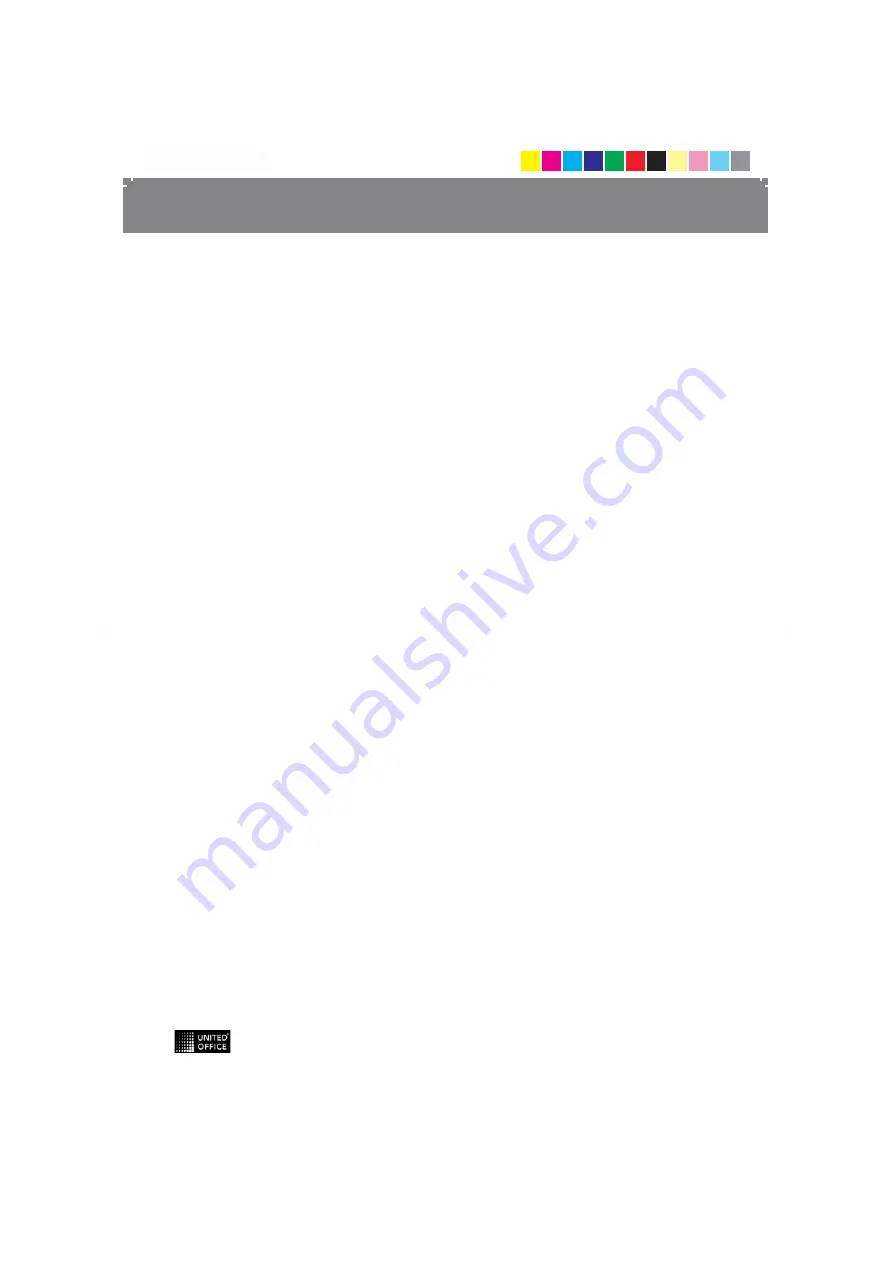
GB 7
3. The guillotine arm is locked on the underside of
the cutting unit. To unlock the guillotine arm, pull
the locking latch out to the right to Position A and
then slide the locking latch towards the front to
Position B (Fig. 1).
4. Move the guillotine arm upwards.
5. Place the material to be cut in the required posi
tion under the pressing rail and press the pressing
rail down (Fig. 2).
6. Then use your other hand to move the guillotine
arm down and cut the document (Fig. 2).
7. In order to lock the guillotine arm again after fin
ishing your work, move the guillotine arm down
as far as possible, pull the locking latch at Posi
tion B out to the right and then slide the locking
latch to the rear to Position A (Fig. 3).
Trimmer
Trimmer with integrated cut selector knob
and setting lock.
Cutting function:
-
Straight cut
Cutting capacity: max. 10 sheets (80 g / m²)
-
Perforation
Cutting capacity: max. 3 sheets (80 g / m²)
-
Wave cut
Cutting capacity: max. 3 sheets (80 g / m²)
The blades are accommodated in a protected hous
ing.
1. Place the cutting unit on a stable, level working
base with the trimmer side facing up.
2. Slide the cutting head to one side of the guide rail
3. Turn the left and right-hand rotating knobs to
OPEN. Place the material to be cut under the
guide rail. Then the rotating knobs to LOCK. The
material is fixed and you can cut it.
Note
: Hold the material to be cut securely, otherwise
it could shift and be cut inaccurately. The raster and
measuring system on the trimmer's working surface
serve as positioning aids.
4. To complete the cut, press the cutting head down
and slide it along the guide rail to the other side
(Fig. 4).
Note
: To prevent a faulty cutting edge, do not run the
cutting head back again but remove the cut material
directly after completing the cut.
Selecting the Type of Cut
The trimmer has three different types of cut available
for selection: straight cut, perforation cut and wave
cut.
1. Slide the lock on the cutting head upwards (Fig.
5).
2. Turn the selector knob until the symbol represent
ing the required type of cut is under the lock (Fig.
5).
3. Press the lock on the cutting head downwards
(Fig. 5).
Replacing the Blade
The blade has four cutting edges (two on each side).
When the quality of the cut is no longer clean, turn the
blade so that one of the unused cutting edges will be
used.
1. Slide the cutting head to one end of the guide
rail.
2. Remove the blade out of the slot from the other
side of the guide rail. Recesses are provided for
this at both sides of the guide rail (Fig. 6).
3. Turn the blade so that one of the cutting edges
not yet used is moved to the cutting position. Lay
the blade back in the slot. When all four cutting
edges of the blade are worn, replace the blade.
Changing a Cutting Head
When the blade of the cutting head is damaged or
worn, the cutting head must be replaced.
1. Remove the end cap of the guide rail from the
base plate (Fig. 7, A) by simultaneously pressing
it in a little at the bottom end and sliding it up.
LB4.pdf 7
LB4.pdf 7
15.02.2012 12:08:57
15.02.2012 12:08:57
Summary of Contents for 73837
Page 3: ...__ __ __ 1 4 7 2 5 3 6 LB4 pdf 3 LB4 pdf 3 15 02 2012 12 08 56 15 02 2012 12 08 56...
Page 39: ...LB4 pdf 39 LB4 pdf 39 15 02 2012 12 09 01 15 02 2012 12 09 01...
Page 40: ...LB4 pdf 40 LB4 pdf 40 15 02 2012 12 09 01 15 02 2012 12 09 01...
Page 41: ...LB4 pdf 41 LB4 pdf 41 15 02 2012 12 09 01 15 02 2012 12 09 01...








































